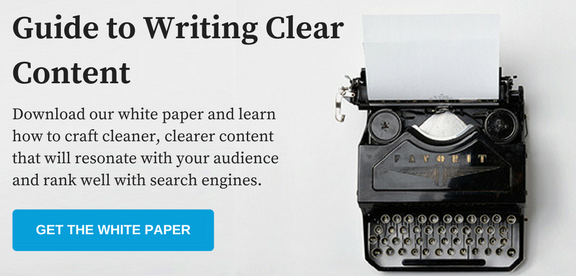Think about the last email, tweet, or blog post you wrote. Did you edit it for content and clarity before you hit send? According to new research from Orbit Media Studios, the percentage of bloggers who have multiple editors in their content workflow has doubled in the last year. Both personally and professionally, writing matters more than ever before. Our online words tell the world, and our customers, who we are. To make a good impression, editing needs to be a key component of your writing process.
As any seasoned writer knows, first drafts are never pretty. But don’t worry about that as you write. In “Everybody Writes,” top content marketing veteran Ann Hadley encourages authors to write badly and create a first draft. She calls this the “Ugly First Draft.”
Handley makes the case for the Ugly First Draft in the following way: “As painful and depressing as it might be to write badly – at least you’re writing, you’re getting the mess out of your head and onto the screen or paper. Then, when you get back to it, you can start shaping it into something more respectable.”
The following tips offer simple ways to improve the clarity of your writing. Use them when editing your work to transform your writing from ugly first draft into polished content ready for you to hit ‘publish.’
Condense when possible
When the time to edit arrives, your focus should be on trimming the fat in your writing. One of the easiest ways to trim the fat is to avoid using multiple words when one will do. Common examples of replacing multiple words with one, via Grammarly, include:
Use because instead of:
- Due to the fact that
- In light of the fact that
Use about instead of:
- Concerning the matter of
- In reference to
- With regard to
Use can instead of:
- Is able to
- Is in a position to
- Has the capacity to
Eliminate meaningless modifiers
Julie Wildhaber, co-author of the book, “The Yahoo! Style Guide” recommends searching for meaningless one-word modifiers in your writing. For example, have you ever read the phrase, “very unique,” “really special,” “added bonus,” or “currently unavailable?”
These modifiers don’t add any extra value to the adjectives that follow. Something that is unique is already one-of-a-kind. By definition, it cannot become more unique. Similarly, a bonus is by definition an addition, while the phrase unavailable tells you what a product or individual’s current situation is. As you edit your work, be sure to seek out and eliminate these redundant phrases that state the obvious.
Avoid adverbs
When trimming the fat from your writing, you will often find adverbs among the first cuts. An adverb describes more fully what’s going on with the words around it. It typically ends in “ly” but not always. For example, in the sentence, the dean graciously accepted the alumni’s donation, the word graciously is an adverb.
In their place, consider using a more vivid verb. For example, instead of applications rose quickly, consider applications surged. The latter sentence offers a more vibrant description of the state of your applications, and in fewer words.
That’s not to say that adverbs are to be avoided entirely. As with any rule, there are exceptions. Adverbs can occasionally alter the meaning of a sentence. To borrow another example from Ann Handley, consider the sentence most writers use adverbs gratuitously. In this sentence, the adverb is important, because without it, the sentence loses its meaning. Whereas the first sentence explained that writers use adverbs unnecessarily, the sentence most writers use adverbs only offers up an obvious fact.
Generally, look for adverbs that are rarely needed, such as:
- very
- really
- basically
- actually
- generally
- typically
To succeed in your content creation, clear writing is imperative. Clear writing shows respect to your audience. It’s well-organized, simple to understand, and doesn’t waste your readers’ time with unnecessary words, jargon, or redundant phrases. However, editing is just one step in the content creation process. For even more insights on how to craft cleaner, clearer content, check out our comprehensive Guide to Writing Clear Content.





